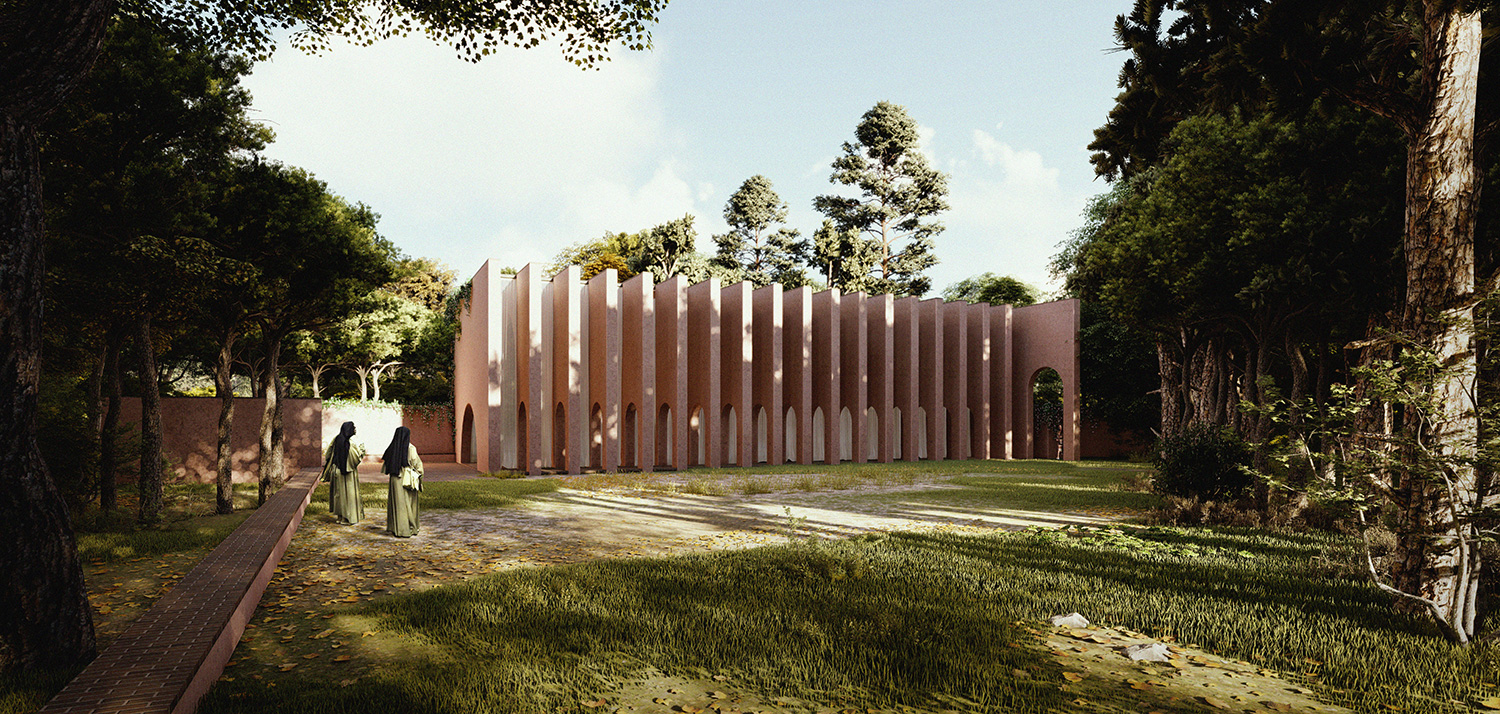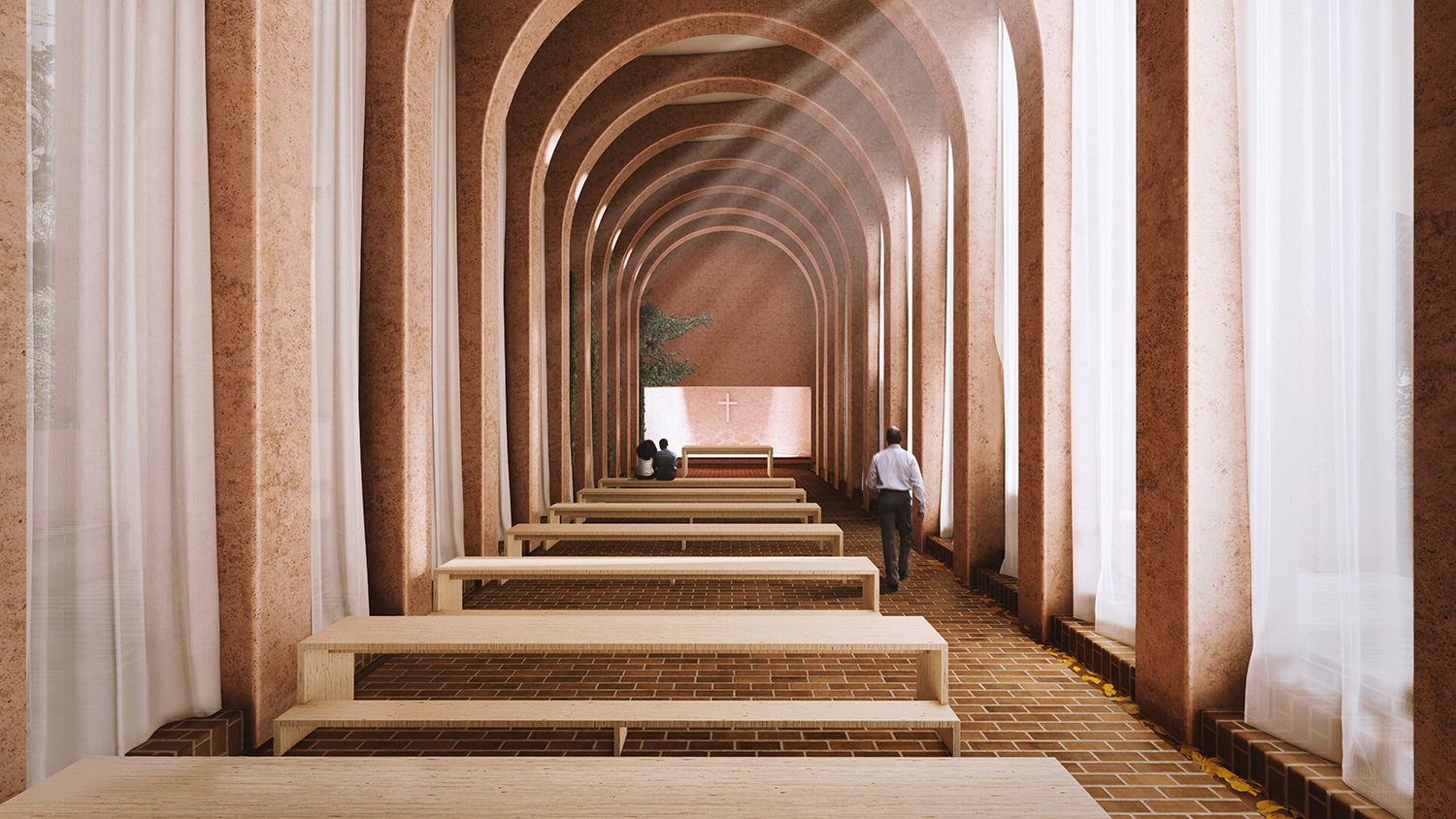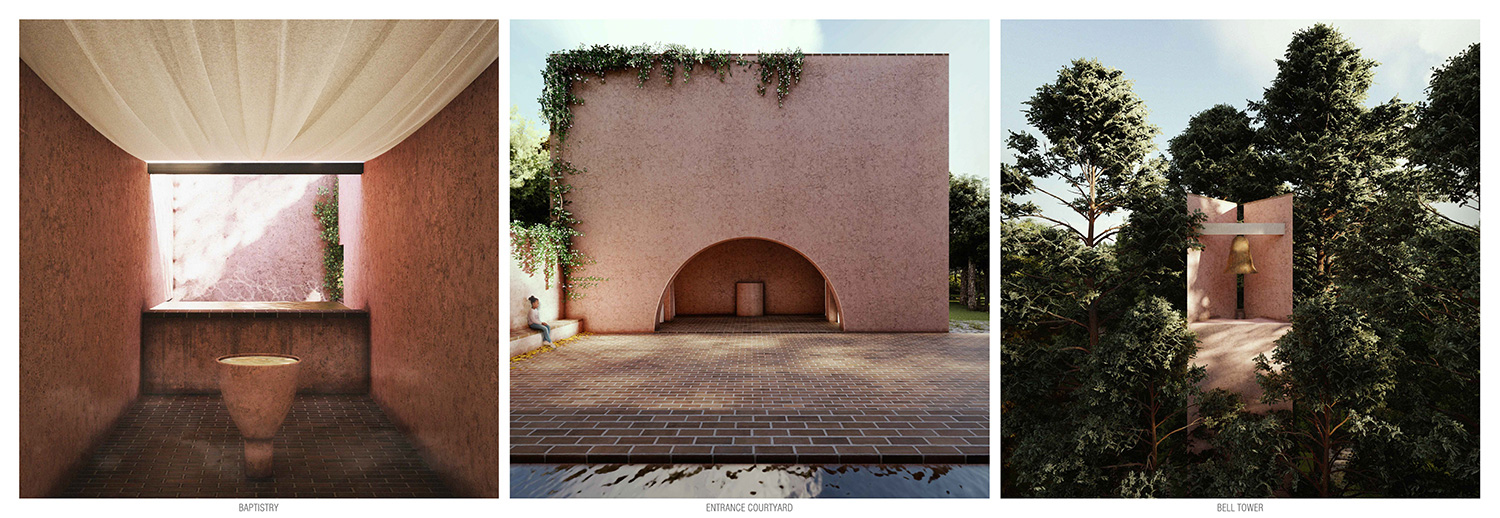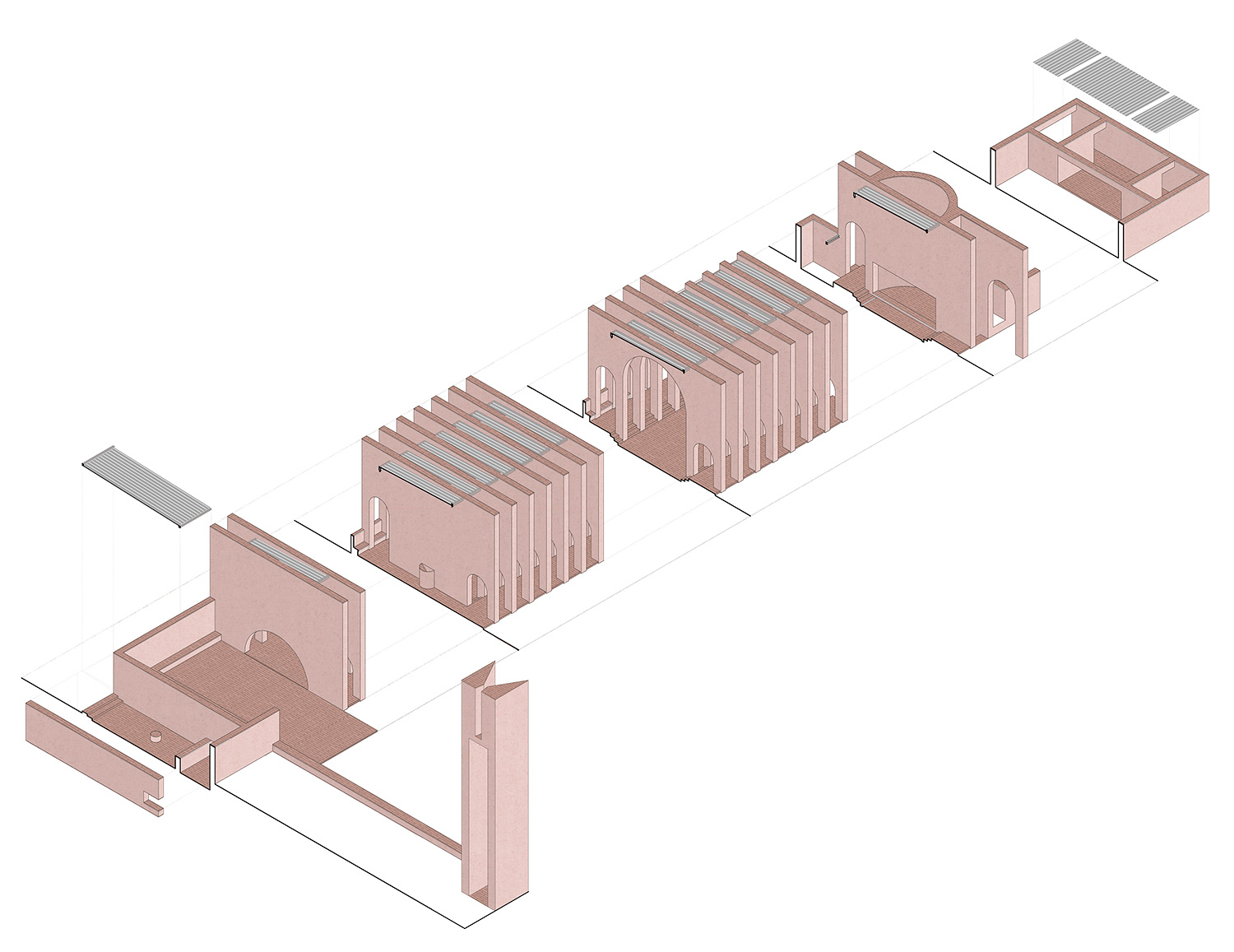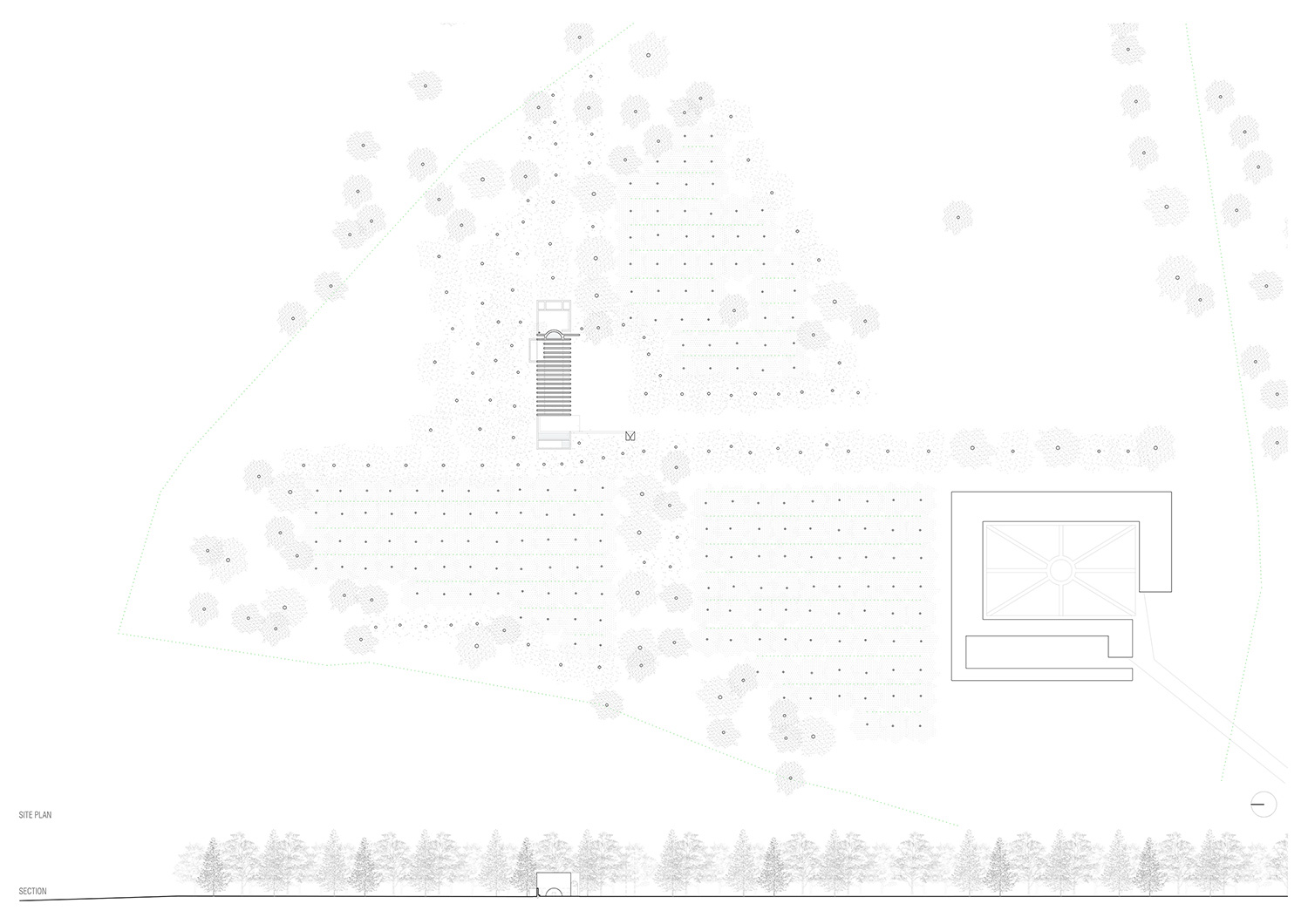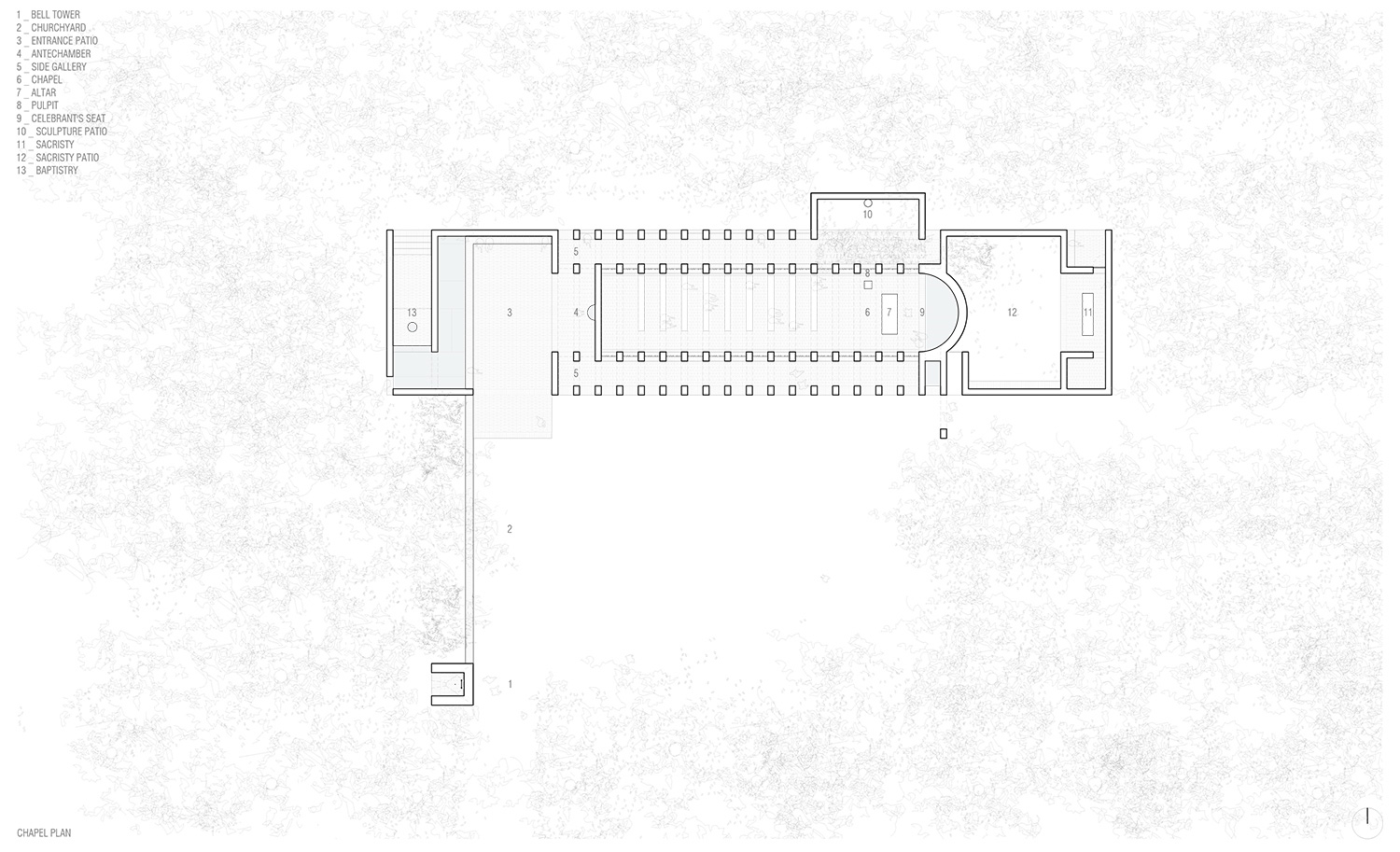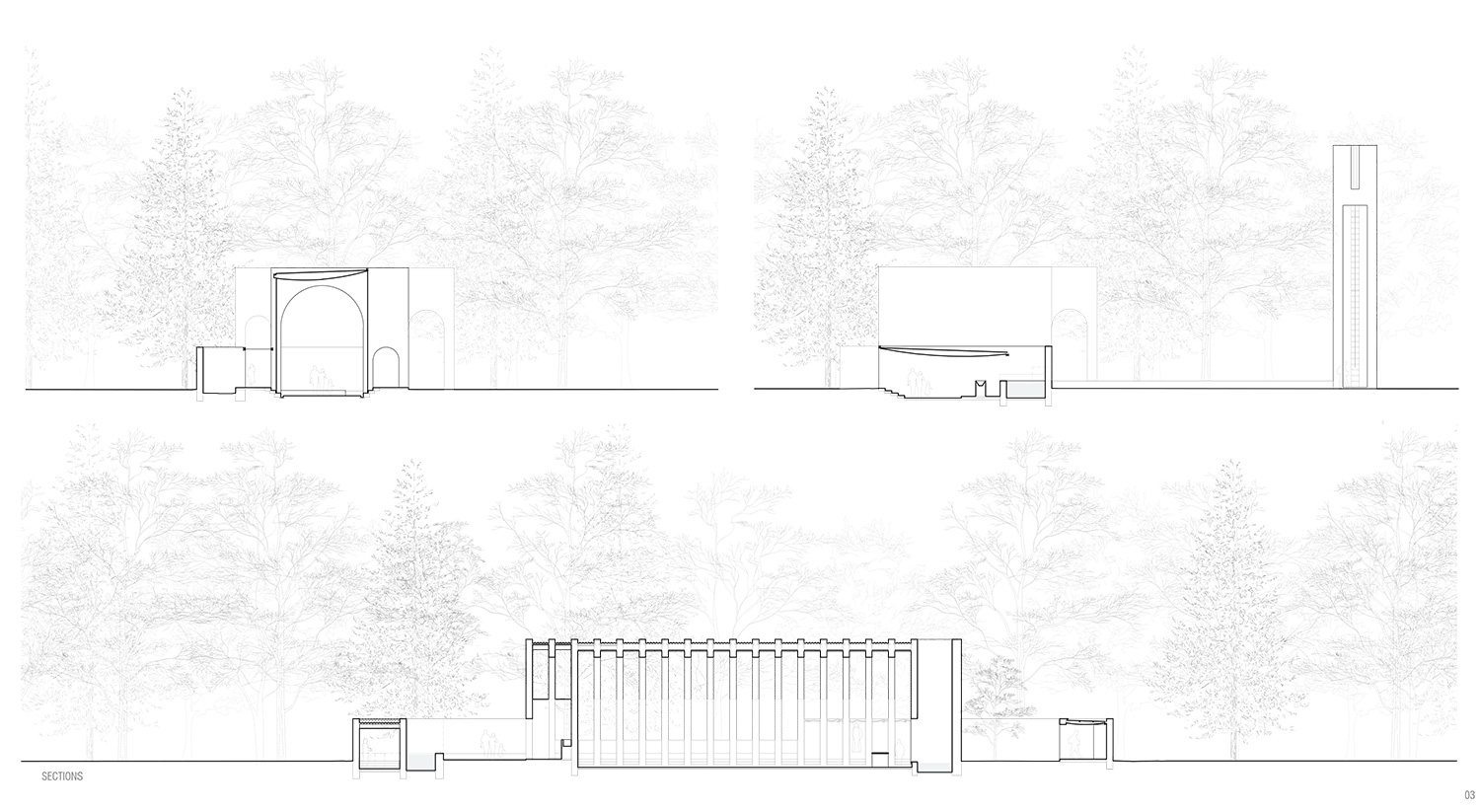☉ Rwanda Chapel is an honour mention competition entry by Bruschy Cunha Reis for Young Architects Competitions in 2019. It is located in Rukomo Rwanda in a forest setting. Its scale is small with a surface of 450 sqm. Key material is concrete. Review the 8 proposals for the same competition.
A chapel is a type of building that, besides providing refuge to a man, simultaneously seeks to elevate his spirit. As such, when building a sacred space we must not be constrained by human proportions, as the space must be roamed by God and men alike.
Our proposal aims to create an atmosphere that helps establishing the connection between the mundane and the divine. For this effect, we do not rely solely on the physical presence of architecture. On the contrary, it is the lack of construction that will bring out the elements that help us create our desired environment: light and nature.
Recent history and religion as a curative
A nearly century long European interference in Rwanda, and the ensuing political instability, culminated in tragedy. The event still weighs on the collective conscience of the Rwandan people and two and a half decades are not enough for all wounds to heal properly. Here the role of religion is central to the work of emotional recovery.
The sense of congregation that impregnates any religious ritual has the capacity to give back to the people who participate in it a sense of welcome, acceptance and understanding that fosters the reconstruction of a new social identity capable of overcoming a trauma of such proportions.
Climate and territory
Rwanda’s mild climate stimulates an outdoor experience. This delicate climatic balance is caused by two major factors: the location close to the equator, which exposes this region to strong vertical light and the high average altitude of the whole country in relation to sea level, which mitigates intense sunlight. Thus, throughout the year we have a reduced thermal amplitude and moderate temperatures. These factors materialize a vernacular architecture marked by great porosity and openness to the tropical climate.
It is also a region marked by strong rainfall indices in which in some months precipitation approaches monsoon levels. The territory is marked by an accentuated topography that defines dramatic valleys and mountains, a condition that is alleviated by soft and fertile terrain. All these factors contribute to a fertile landscape of dense and exuberant vegetation crossed by a vertical and focused light that creates a mystical atmosphere of great enchantment.
At the same time it is the basis for an economy that, although fragile, depends heavily on these natural conditions that are conducive to agricultural production.
The brief and strategy
The project uses the existing vegetation, as a guiding element that informs the site location. The intent relies in defining a large orchard that is created between the local vegetation and the proposed vegetation.
It is proposed with the definition of this space, to establish a productive activity that can benefit the convent of Poor Clares sisters and the local community. The maintenance of these fields will emphasize a sense of community that punctuates the lives of people throughout the year.
The chapel is placed as a central element of the botanical composition and uses the treeline as a protective wrapping, creating of a vivid threshold that distances itself from the surroundings and provides an environment of recollection and safety, essential conditions for ascetic rituals.
At the same time the vegetation defines the necessary separation between chapel and convent so that the privacy of the sisters is not compromised.
The building
The chapel is canonically implanted in an east-west direction. The cult space is positioned as the central element of the building and serves as an anchor to the implantation of the remaining spaces. South of the chapel and receiving the accesses that led to the site is the churchyard. This churchyard is defined not only by the building but also by the portentous vegetation proposed and the bell tower, positioned in the southwest corner of the churchyard. The bell tower is the element that punctuates the path arriving from the convent and connects with the chapel by a wall that serves as a bench.
From the churchyard we access the entrance courtyard, bounded by walls that allow us to glimpse the tree canopies to the north, and to the west, a water tank that encloses the courtyard and directs the faithful towards the chapel. At first, we have an
antechamber that conceals the cult space and where the receptacle of holy water is located. Going beyond this space we arrive at the cult area which is marked by an austere and despoiled environment of ruled metrics. This metric is defined by the sequence of porticos that at the same time virtually define a singular vaulted space and that in its intervals allows a visual relationship with the proposed vegetation that embraces the chapel to the north.
The atmosphere of the chapel is then defined by this contamination of nature and a strong presence of vertical light, so characteristic of this place, in the altar area, on the east end of the chapel. This provides an environment that refers to the contemplation of the divine creation in a purer state. All this interaction is slightly filtered by a translucent linen cloth that introduces serenity in the contemplation space.
This void between porticos not only illuminates the central nave, much like the stained glasses did in the Western churches, it also permits a dynamic use of the cult space, as the curtains can be opened on festive days, allowing the priest to give mass to a broader audience.
On both northern and southern sides of the chapel there are arched secondary naves that mediate the relationship with the exterior, defining a gradation between the sacred and the profane.
From the north gallery we access, crossing through the vegetation, two spaces that by their nature are intended to be more private and detached. To the west we have a baptistery topped by a zenith light and a small tank that connects to the entrance patio of the chapel. To the east we have the that defines a patio in the void between itself and the rear of the chapel, providing the priest with a private moment of introspection.
This building is intended as an expression of timelessness, but at the same time echoing the values of the territory in which it is located. Thus, the materials chosen, such as reinforced rammed earth, cladded in adobe, for the porticoes and handmade bricks for pavements and cladding, illustrate the desire to highlight the telluric character of a building born in the Rwandan landscape.
The repetition of the porticos, as well as there simple and minimalist design, ensure that the construction would be quick and efficient, as the castings that give shape to the chapel could be reused for the vast majority of the building. By having the porticos distanced between themselves, besides benefiting from a great reduction in material and cost, it also allows for a greater involvement of the community, as the cloths that connect the porticos could be weaved locally, in a ritual that invokes the lightweight traditional Rwandan dress, the Mushanana.
